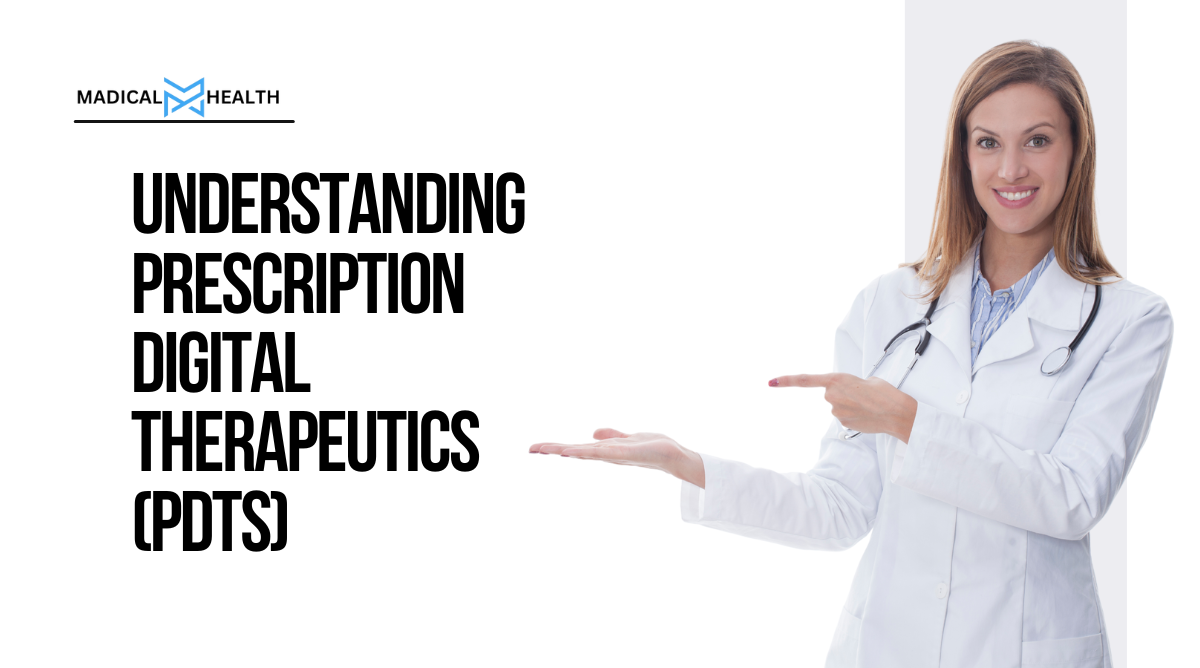Digital health technology has rapidly evolved, presenting various tools and requests aimed at improving health outcomes. Among these advancements, Prescription Digital Therapeutics (PDTs) stand out as a promising innovation. This article investigates into the shades of PDTs, their controlling scenery, and their impression on healthcare.
What Are Prescription Digital Therapeutics?
Prescription Digital Therapeutics (PDT) are a specialized type of digital health product. They deliver therapeutic interventions directly to patients. Unlike general health apps, PDT require a prescription. They are designed for specific medical conditions. PDT also undergo strict evaluation and FDA approval. They monitor vital signs more comprehensively. They must be prescribed by a healthcare provider. PDTs undergo strict evaluation and FDA approval.
The Digital Health Spectrum
Digital health includes a extensive variety of skills, counting:
- Digital Media: Websites, webinars, and online educational content.
- Mobile Technology: Apps that track health metrics like blood pressure and blood sugar levels.
- Artificial Intelligence (AI): Systems that analyze health data to provide insights or predict health outcomes.
- Virtual Reality (VR): Immersive experiences for therapeutic purposes, such as pain management or mental health treatments.
The Regulatory Pathway
The FDA plays a crucial role in safeguarding that PDTs are safe and effective for patients.In 2017, the FDA established a regulatory framework for software as a medical device (SaMD). This paved the way for PDTs to undergo rigorous evaluation. PDT are now assessed similarly to traditional medical devices. The framework ensures their safety and effectiveness. This step marked significant progress for digital health tools. This includes:
- Randomized Control Trials (RCTs): Testing the efficacy of PDTs in controlled environments.
- Safety Evaluations: Ensuring a systemic lack of adverse events.
- FDA Authorization: Granting approval based on evidence of benefit and safety.
Key Differentiators of PDTs
PDTs distinguish themselves from other digital health tools through:
- Regulatory Approval: Must be official by the FDA.
- Prescription Requirement: Only available through a healthcare provider’s prescription.
- Evidence-Based: Reinforced by scientific trials and technical research representative their effectiveness and care.
The Impact of PDTs on Healthcare
PDTs are changing how certain health conditions are managed. They are especially useful in areas with limited access to traditional healthcare. The COVID-19 pandemic highlighted the shift to telehealth. This shift showed the need for innovative therapeutic options. PDTs offer solutions in this evolving landscape.
Behavioral Health and PDTs
One of the greatest important areas of influence for PDT is social health. PDT offer novel action avenues for circumstances such as:
- Depression: Providing cognitive-behavioral therapy (CBT) through digital platforms.
- Sleep Disorders: Offering interventions to improve sleep hygiene and manage insomnia.
- Substance Abuse: Secondary retrieval from opioid addiction and other material use complaints.
Evaluating the Value of PDTs
Healthcare providers and payers are keenly interested in understanding the value PDT bring to both health plans and patients. Key considerations include:
- Efficacy: Demonstrated through clinical outcomes.
- Accessibility: Providing treatment options in areas with limited healthcare providers.
- Cost-Effectiveness: Assessing the financial impact on health plans and patients.
Conclusion
Prescription Digital Therapeutics represent a significant advancement in the digital health landscape, offering targeted, evidence-based treatments for a variety of conditions. As technology evolves, PDT will play an increasingly important role in modern healthcare. They will provide accessible and effective treatment options. Patients worldwide will benefit from these advancements. The role of PDT will expand in healthcare. This evolution will improve patient outcomes.
FAQs
1. What is the main difference between digital health tools and prescription digital therapeutics (PDTs)?
Digital health tools encompass technologies like fitness apps and vital sign monitors. PDT are a specialized subset of these tools. They require a prescription to be used. PDT undergo rigorous FDA approval for efficacy and safety. This ensures they provide reliable therapeutic interventions.
4o
2. How do PDTs benefit patients in behavioral health?
PDTs provide innovative treatment options for behavioral health conditions like depression, sleep disorders, and substance abuse. They provide accessible and effective therapies delivered remotely, which helps address provider shortages and improves patient outcomes.
3. Why is FDA approval important for PDTs?
FDA approval is crucial for PDTs as it ensures they have been thoroughly evaluated for safety and efficacy. This regulatory oversight ensures PDTs meet high standards. They are on par with other medical devices and medications. This provides confidence in their use. Healthcare providers trust PDTs. Patients can rely on them too.
